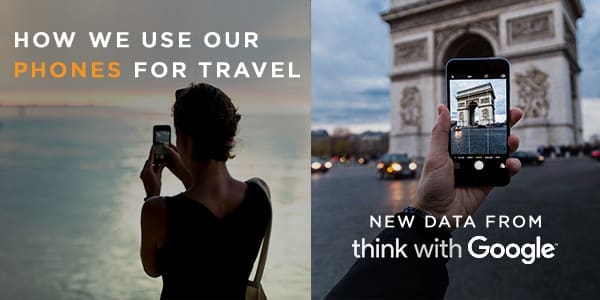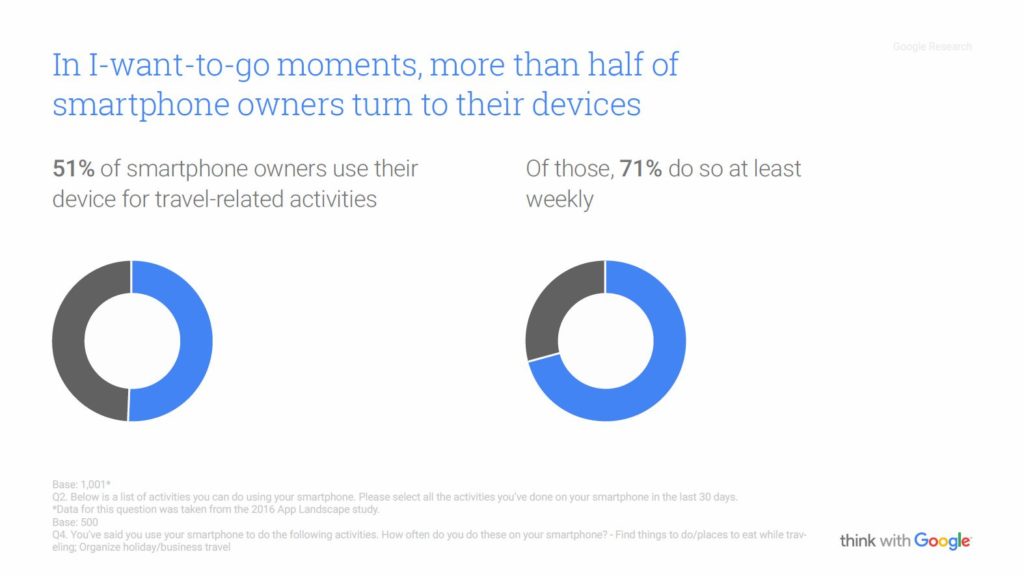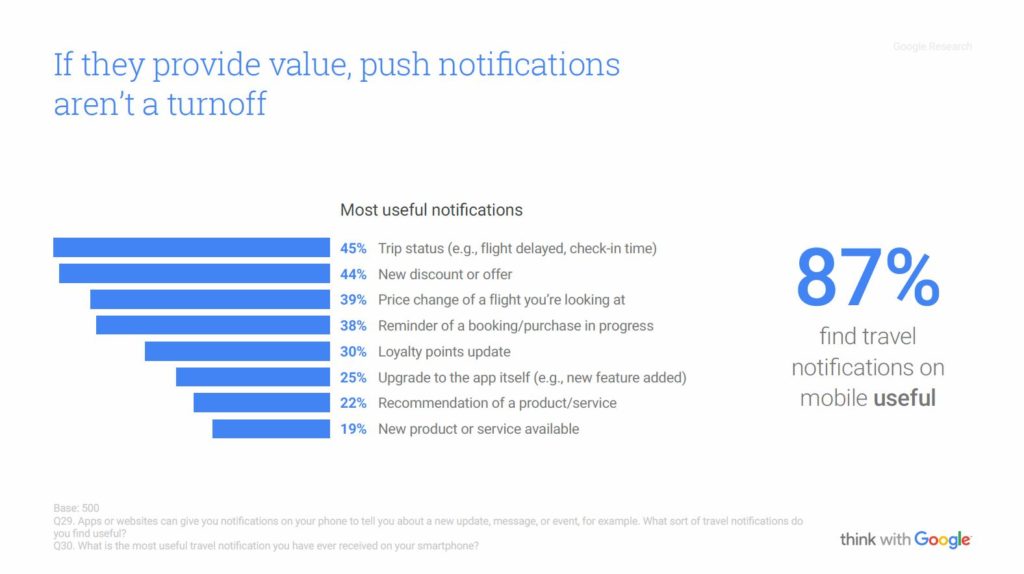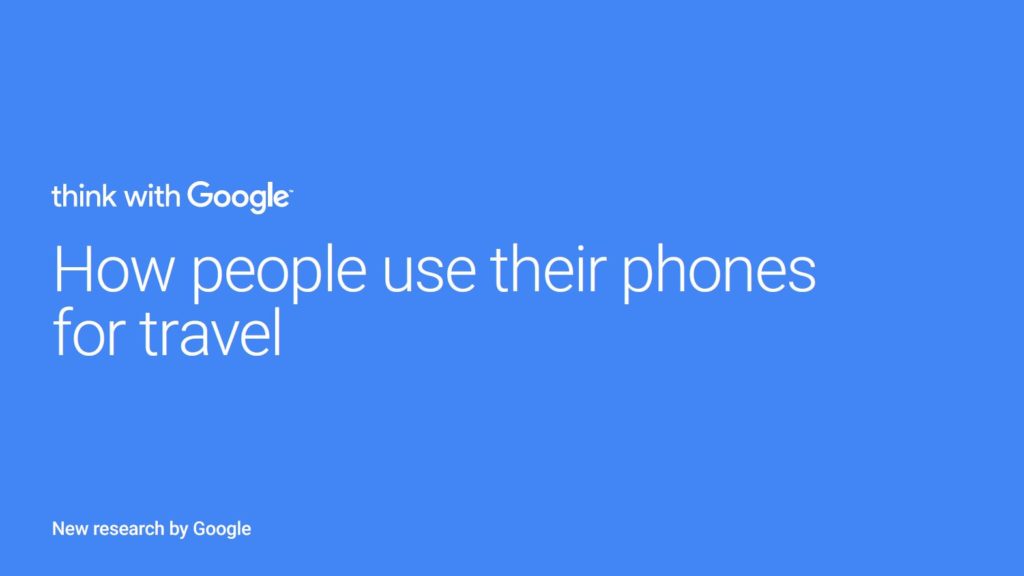
In our mobile-first world, it’s no surprise that people regularly turn to their phones to help guide travel decisions.Mobile technology is transforming nearly every aspect of the travel industry, and new research published by Google outlines some of the latest shifts.In partnership with global marketing research firm Ipsos, the data reveals insight on the role of the smartphone before, during, and after their travel. Analyzing behavior surveys conducted by 500 smartphone users in the United States between the ages of 18-64, it’s clear that our phones have become a ubiquitous part of the travel experience, and their use goes far beyond posting poolside selfies.Here are four key takeaways from the report.
SMARTPHONE AS TRAVEL GUIDE
When a person experiences an “I want to go” travel moment, they first turn to their smartphone.Most of the time users are searching for discounts (44% of users), and researching tourist-related activities (35% of users).When it comes to researching accommodations, one in four users are using their phone, while another 24% are watching destination videos.

WE APP FOR CONVENIENCE
Travel apps have proven useful for many travelers. They track loyalty program details and manage their flight arrangements. In fact, 22% of users use their smartphones to check in for their flight, and 18% of users use their app to flash their boarding pass.Once on the ground, travelers are using their smartphone to look up addresses (20% of users) and search rental car options (19% of users).
PEOPLE WANT SIMPLICITY
When it comes to what makes a travel app desirable, users prioritize ease of use by a wide margin (58% of users). Other features travelers want in their app don’t even come close.Still, 36% of users want access to offers and discounts via their app, and 31% of users rely on their apps for receiving useful notifications.Unlike apps from most other industries, push notifications via travel apps are something most people find useful (87% of users). The five most useful notifications are trip status updates (45% of users), new discount offers (44% of users), flight price changes (39% of users), booking reminders (38% of users), and loyalty point updates (30% of users).

SIZE MATTERS
The primary reason users delete travel apps is that they hog memory.Chunky travel apps move 30% of users to delete. The second most common reason travelers delete is simply because they’re done with it, with 48% of people using a travel app for a single trip. However, users have shown they are willing to again download an app they’ve previously deleted if improvements are made.The primary improvement users want is a slimmer file size (27% of users), while the second most common request is an app that is redesigned to be simpler (26% of users). Travelers are also prone to re-download an app is if there is some kind of discount being offered on a future purchase.
ACCESS THE FULL REPORT FROM GOOGLE HERE







